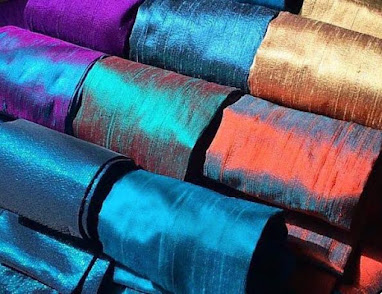Why pure Silk fabric is so expensive:
Silk has a long history in world. Silk is a natural protein fiber, some forms of which can be woven into textiles. Silk is produced by several insects; but, generally, only the silk of moth caterpillars has been used for textile manufacturing. Silk is one of the strongest natural fibers, but it loses up to 20% of its strength when wet. It has a smooth, soft texture that is not slippery, unlike many synthetic fibers. Sericulture, or silk farming, is the cultivation of silkworms to produce silk.
To produce 1 kg of silk, 104 kg of mulberry leaves must be eaten by 3000 silkworms. The major silk producers are China (54%) and India (14%). Silk's attractive lustre and drape makes it suitable for many furnishing applications. It is used for curtains, upholstery, bedding & interior home decor.

.png)
Comments